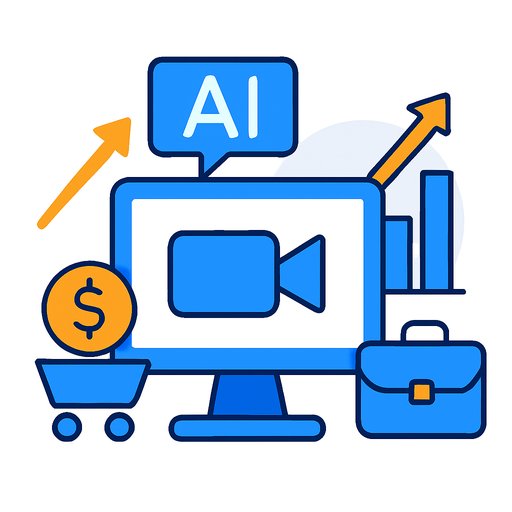Coca-Cola doubles down on AI for the holidays-and the response is split
Coca-Cola brought back its holiday trucks and reignited the AI ad fight-again. For PR and communications teams, this is a live case study in how brand nostalgia, new tech, and public sentiment collide.
The company launched a multi-spot holiday campaign. One is a traditionally shot 30-second TV ad, "A Holiday Memory," showing a mother prepping for the season and enjoying a Coke while remembering her family singing "Feliz Navidad." It's running across North America, Latin America, and Asia South Pacific, in collaboration with WPP Open X.
The headline-maker is an AI-generated reboot of the 1995 "Holidays Are Coming" ad, created with AI studio Silverside (with a separate "Fantastical" version by Secret Level). Learning from last year's backlash, the new spot avoids AI humans and centers on animals greeting the trucks. Even so, viewers flagged inconsistencies-like trucks sporting extra wheels in some shots.
Backlash vs. business impact
Public response is leaning negative for the second year. The YouTube upload has pulled in thousands of comments critiquing AI use and questioning why the brand didn't go with traditional animation, with some calling out the "Real Magic" tagline as mismatched.
Yet, metrics from last year tell a different story. System1 research found the previous AI spot scored well on effectiveness, brand fit, and emotional impact. Coca-Cola said: "The evolution of this kind of technology has allowed us to enhance our films and fine-tune our storytelling… Last year's film performed exceptionally well and was a success with customers which is what matters most to us."
Pratik Thakar, Coca-Cola's global VP and head of generative AI, added: "Last year we decided to go all in, and it worked out well for us. Consumer engagement was very high… that's part and parcel of doing something pioneering." The company says AI is a tool to blend human ingenuity with innovation and will use it when the brief calls for it.
Why this matters for PR and comms
This isn't just about a Christmas ad. It's a test of how brands use AI without dulling craft, alienating fans, or inviting avoidable criticism. The tension is clear: AI provides speed and creative options, but raises questions about quality, jobs, and authenticity.
Your job is to keep the brand's story intact while pressure-testing execution, disclosures, and community response-especially when a beloved asset like "Holidays Are Coming" is involved.
Key takeaways for PR leaders
- Expect a split: social sentiment can skew negative while business KPIs hold up. Report them separately to avoid a single "winner" narrative.
- Be explicit on the why: clarify where AI was used and what value it added. If you avoid people with AI, say so.
- Tighten creative QA for AI: build a checklist to catch visual anomalies (wheels, hands, reflections, text, physics, continuity).
- Align message and method: if your line is about "real" or "magic," explain how human oversight shapes the output.
- Own the nostalgia: when updating iconic work, frame it as a respectful refresh, not a replacement.
- Prepare your community plan: moderate comments, engage creators who understand the brand's heritage, and set escalation paths for glitches.
Practical steps you can act on this week
- Draft a holding statement and internal FAQ that answer: why AI, where it was used, who approved it, how jobs are impacted, and what you'll improve next round.
- Pretest creative with third-party panels and real consumers. Consider firms focused on ad effectiveness research like System1.
- Set an AI creative audit: mandate human sign-off by specialists who look for known failure modes and brand-safety risks before release.
- Define thresholds for action: e.g., if negative sentiment exceeds a set ratio for 48 hours, trigger response content or creator amplification.
- Address workforce concerns clearly: be transparent about how AI augments teams and what isn't changing in your production model.
- Measure both sides: track brand lift and sales alongside sentiment, creator reactions, and press tone to provide a balanced readout.
Suggested talking points for spokespeople
- "We used AI for specific scenes to expand what's possible, under tight human oversight."
- "Our creative teams are central to this work; AI doesn't replace them."
- "We heard last year's feedback and applied it-no AI humans, stronger QC, and a sharper focus on story."
- "We'll keep testing, learning, and improving based on what customers respond to."
What to watch next
Keep an eye on total campaign performance versus social heat. If sales and brand favorability hold while negative chatter persists, your guidance to leadership should be: stay the course, keep improving execution, and communicate the craft behind the scenes.
If glitches dominate the narrative, pause, patch, and reframe with behind-the-scenes content showing the human process and quality controls. Don't let a fixable artifact stand in for the whole story.
Helpful resources
- Ad effectiveness research hub: System1 Group
- Upskill your team on AI in marketing and comms: AI courses by job and AI certification for marketing specialists
Bottom line
AI in brand storytelling will keep drawing mixed reactions. The smart move isn't to retreat-it's to raise the bar: stronger QA, clearer messaging, and a tight link between creative choices and business outcomes. That's how you protect brand equity while experimenting with new tools.
Your membership also unlocks:






